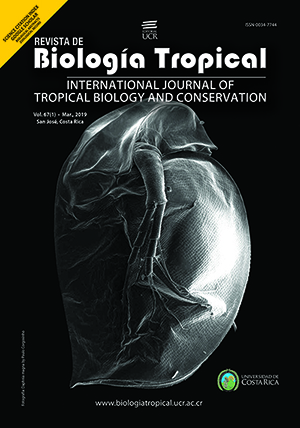Abstract
The earth could experience a warming of 4 °C in the next one hundred years. This would put at risk the plants that can´t adapt. Fragaria mexicana is an endemic plant of temperate forest of Mexico. The response of this wild strawberry to temperature increasing has not been studied and could play an important role for event of global warming. This study determinate the morphological and physiological responses of F. mexicana and changes in the N2-fixing bacteria (BFN) population on its roots, due to two environmental conditions with differences of temperature 5.1 °C: greenhouse (high temperature, TA) and open land (low temperature, TB); and with four free-living nitrogen-fixing bacteria (BFN) treatments: non-inoculated (T), inoculated with strain eight (CP8), strain four (CP4), and strains eight and four mixed (CP8 + 4). BFN were isolated from the rhizosphere of F. mexicana and were genetically transformed with reporters to quantify the population at the end of the experiment. NO3, NH4 and P and organic matter (MO) in the substrate were determined at beginning and finish of the experiment. Shoot and root dry weight, photosynthetic rate, flowering and fructification starting, flowers and fruits number, were measured. Shoot dry weight and photosynthetic rate were lower in TB than TA, decreasing 3.1 g and 0.94 µmol m-2 s-1, respectively. Root dry weight was 3.0 g less in TA compared with TB. Number flowers decrease in 40.89 % and number fruits in 38.11 % on TA than TB. F. mexicana plants start flowering 14 days previously in TB than TA. MO in the substrate decrease in TA, while the concentration of NO3, NH4 and P, increased. Population of BFN was lower in TA. Results obtained indicated that higher temperature promotes the growth of F. mexicana and reduce its reproduction and BNF population associated with its roots.

This work is licensed under a Creative Commons Attribution 4.0 International License.
Copyright (c) 2019 Julian Delgadillo-Martínez, Adriana Patricia Gamboa-Mendoza, Juan José Almaraz-Suárez, Alejandrina Robledo-Paz, Alejandro Alarcón


